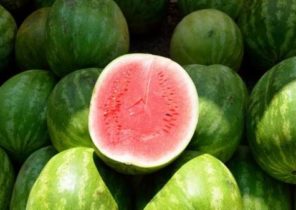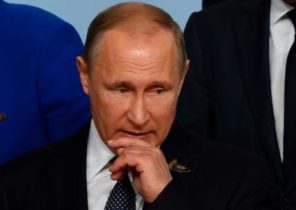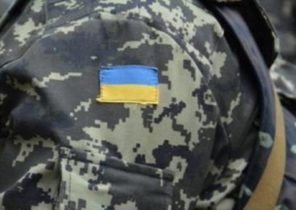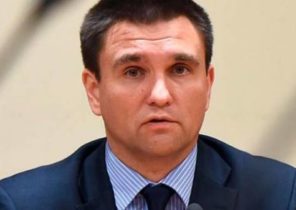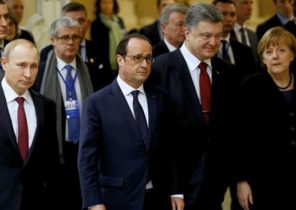Apparently, a great lesson in how to curb the epidemic COVID-19, the world taught in Hong Kong. In a country with a population of 7.5 million people was only 4 deaths. Studying the Hong Kong approach, researchers have noted that the intensity of transmission of coronavirus — that is, how many people on average each patient infects, reducing measures such as contact tracing, quarantine, social distancing, the use of facial masks and closing schools. In Hong Kong, this figure has been reduced to a critical level — 1. However, to clearly delineate the effectiveness of different measures and behavioral models that are used simultaneously, in a scientific paper published this month, failed.
At this stage, one of the most urgent tasks facing the scientific community — to determine the effectiveness of the unprecedented measures taken worldwide to curb the epidemic. In the end, the researchers hope to predict how these or other control measures and their combination affect the transmission speed and the number of infections. This information is especially useful for governments in developing strategies on how to get back to normal life, while maintaining a low level of transmission and preventing repeated waves of infection. “We are not talking about the next epidemic, and what needs to be done right now,” explains a specialist in mathematical modelling the London school of hygiene and tropical medicine, Rosalind Eggo (Eggo Rosalind).
Scientists have been studying models of different countries to determine the most effective precautions. Models based on real data, the reliability of those used at the beginning of the outbreak and predict the future effect of significant assumptions. Consolidating data from around the world will allow us to compare the responses of different countries together. In contrast to the method, where countries are treated separately, this will allow us to develop models that will provide more accurate predictions about a new pandemic phases.
But to determine what is cause and what is effect — is no easy task. Partly because the situation in every country is different, and there is some uncertainty about how to observe these or other measures, warns of Eggo. “It’s really difficult, but this does not mean that it is not necessary to try,” she adds.
Put it all together
Efforts in this direction in the coming weeks, will support a database, where acquired data on hundreds of measures from around the world. The platform, which was prepared for the world health organization (who) working group of the London school of hygiene and tropical medicine, collects ten other working groups — including from Oxford University, Scientific center of complex systems in Vienna and non-profit organizations like “the Project on capacity assessment” (ACAPS) that analyze humanitarian crises.
As explained by the scientist at the London school of hygiene and tropical medicine Chris Grundy (Chris Grundy), the database will organize coming from various groups of information and thus will be comprehensive. Control measures when outbreaks are tracking organizations such as the who, but in the case of COVID-19 the picture is complicated by the speed of the pandemic and its extent, says Grundy. For processing and accounting of the London school of hygiene and tropical medicine attracted an impressive corps of 1,100 volunteers. According to Grundy, the data collected will be available for further use and will be gradually updated. Now the key is speed, he says. “On account of every day,” he says.
A team of scientists studying a broad range of methods from different countries. The Vienna team has documented 170 of the types of measures in 52 countries — from the benign like stickers on the floor that marked the safe two-meter distance, to severe limitations such as closure of schools. In addition, they keep track of recent attempts by some countries to establish a normal life and current actions — for example, the order to wear medical masks. The Oxford project “Monitoring of governmental responses to COVID-19” (Government Response Tracker) keeps track of the 13 types of measures in more than 100 countries. 7 of 13 consolidated in a single index of “strictness,” he ranks the steps taken by severity and allows comparisons to be made between countries that went their separate ways. Methods of calculation of the index shall be reviewed as adding new measures.
Grouping
Scientists in both groups have already begun analyzing the data, studying the differences in approach in different countries. In search of regularities of the Vienna team splits countries into groups according to different criteria — for example, at what stage of the epidemic began the intervention, how many made and any limitations. In Europe, the algorithm has grouped together Sweden, the UK and the Netherlands — these countries have reacted relatively slowly. In the early stages of the epidemic they counted on a strategy of collective (or “herd”) immunity. All three countries initially relied on voluntary compliance with the proposed measures, but the UK and the Netherlands and later moved to more decisive steps — including quarantine, says Amelie devar-Larryv (Amélie Desvars-Larrive), an epidemiologist from the Research center of complex systems and the Vienna University of veterinary medicine.
Germany and Austria, by contrast, is distinguished by the fact that he had taken decisive action at an early stage — in contrast to Italy, France and Spain, who have taken the same steps, but much later. And today the mortality rate from coronavirus infection in Germany and Austria made up only a small percentage of Italian, French and Spanish.
Early findings of the Oxford team suggests that poor countries tend to impose stricter measures than the rich. So, the Caribbean country of Haiti has imposed a strict quarantine after a confirmed case while the US waited after the first death more than two weeks — and then told the citizens to stay home. Perhaps the clue lies in the fact that in low-income countries medicine developed worse and they have to tread carefully, says the researcher of public policy, University of Oxford Anna Petherick (Anna Petherick). It is not excluded that they already had the opportunity to learn from others because the virus has reached these countries later.
Patterns and predictions
Ultimately, the researchers hope thanks to the collected data to go beyond comparisons of individual nuances and to assess how effectively the strategy as a whole. “It is necessary to evaluate the measures taken in the dynamics, in order to develop real measures, says Eggo. In creating the database was not involved, but expects to use it. — If we don’t know what works and how effective, then decide what to do next, it will be difficult”. Of eggo and colleagues will use the data collected to test the accuracy of their mathematical models. They use equations to describe transfer rate and its mechanism in different interventions at different stages.
Ideally, researchers will be able to predict how the inclusion and cancellation of these or those measures will affect the number of cases over time. Policy can use these projections and the data about the possibilities of intensive care when making decisions — for example, when to open schools, says physicist and mathematician of the Scientific center of complex systems and of medical University of Vienna Nils Haug (Haug Nils).
Team Haug of 15 people will decide which statistical approach is preferable. They determine the specific effect of a particular intervention, and what measures can most accurately predict future levels of contamination. One of the approaches used machine learning technique. It’s called a neural network with feedbacks and is used to study regularities and forecasting. To determine the effectiveness of a particular intervention, researchers can looking how to change the predictions if you delete it from the network.
Another method involves regression analysis — it estimates the relationship between the particular measure (e.g., closing schools) and individual metric (e.g., transmission intensity). Using regression analysis, for example, the method of Lasso — the researchers will determine what measures reduce the intensity of transmission.
But each method has its limitations, says Haug. So, the method is Lasso assumes that the selected measure over time equally reduces the intensity of transmission, irrespective of the country. And this is the greatest difficulty when studying experiences of different countries. Researchers need to take into account national peculiarities — such as the spread of infection is affected by the cohabitation of different generations. The Vienna team will ultimately try to integrate in their model all these indicators. At the moment, they will consider them all as one variable, which changes the intensity of transmission to individual countries.
While there is no vaccine or effective treatment, the only protection from COVID-19 is to interrupt transmission. According to Peterik crucial when choosing effective tactics it has accurate awareness of its consequences. “If we have a clear idea of what we need to do and what methods will help to stop the spread and save more lives, it will be a huge contribution,” she concludes.
